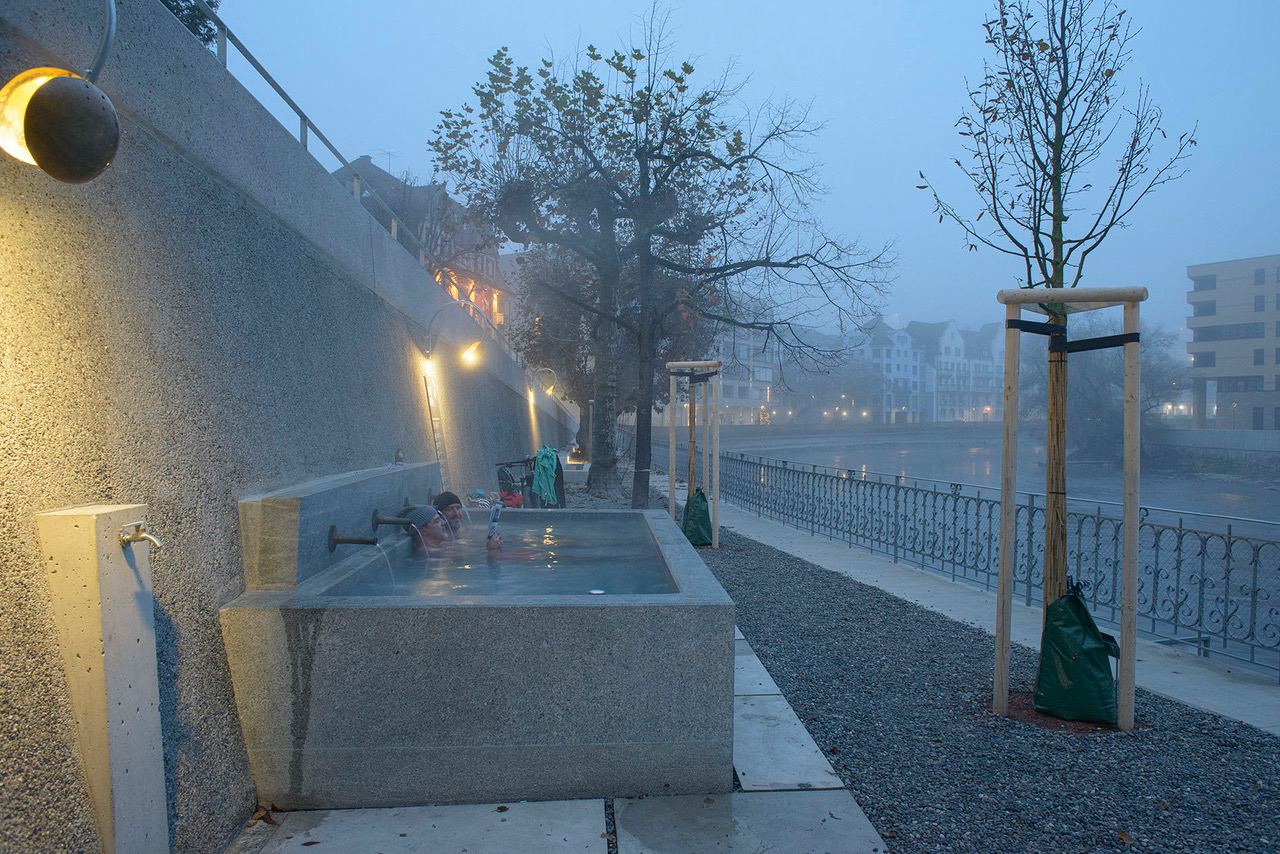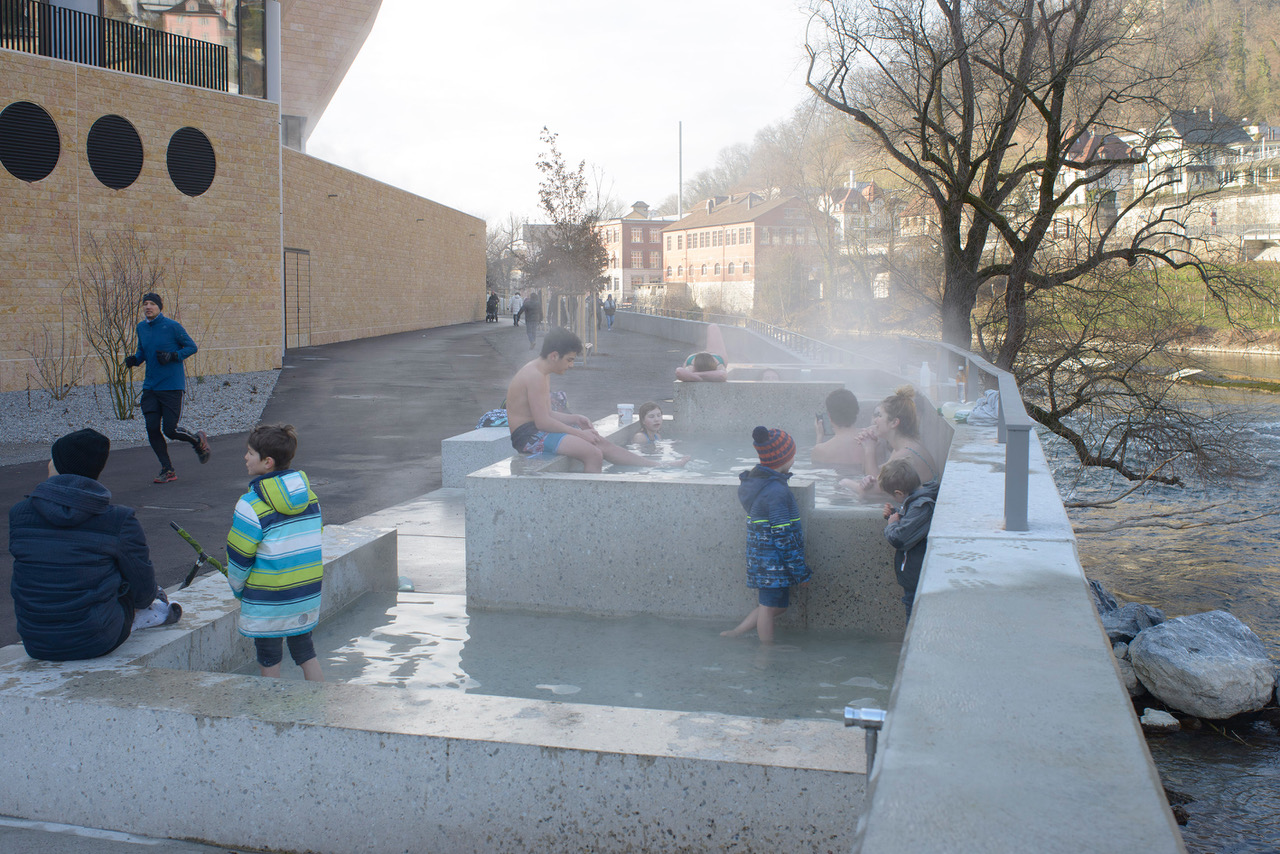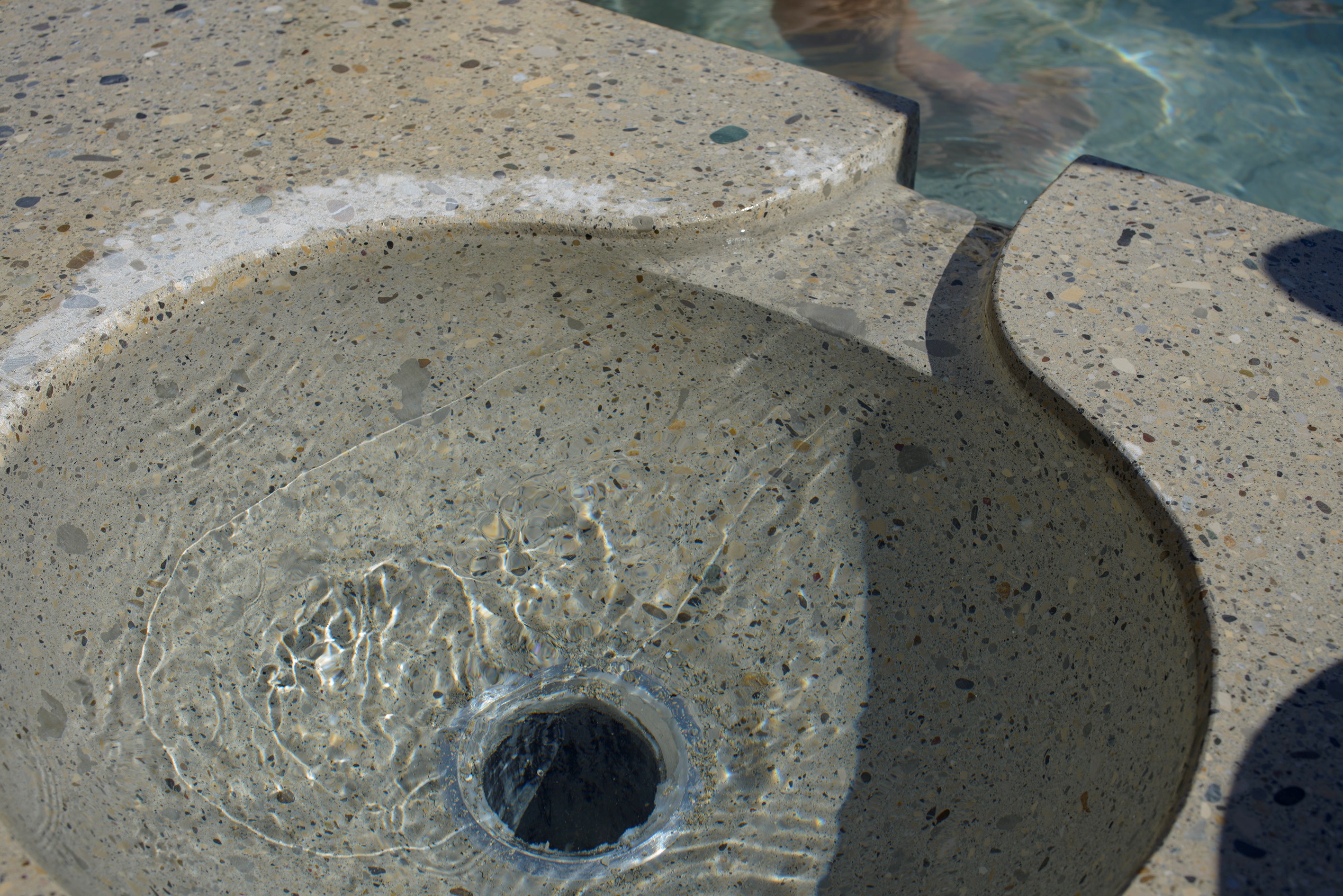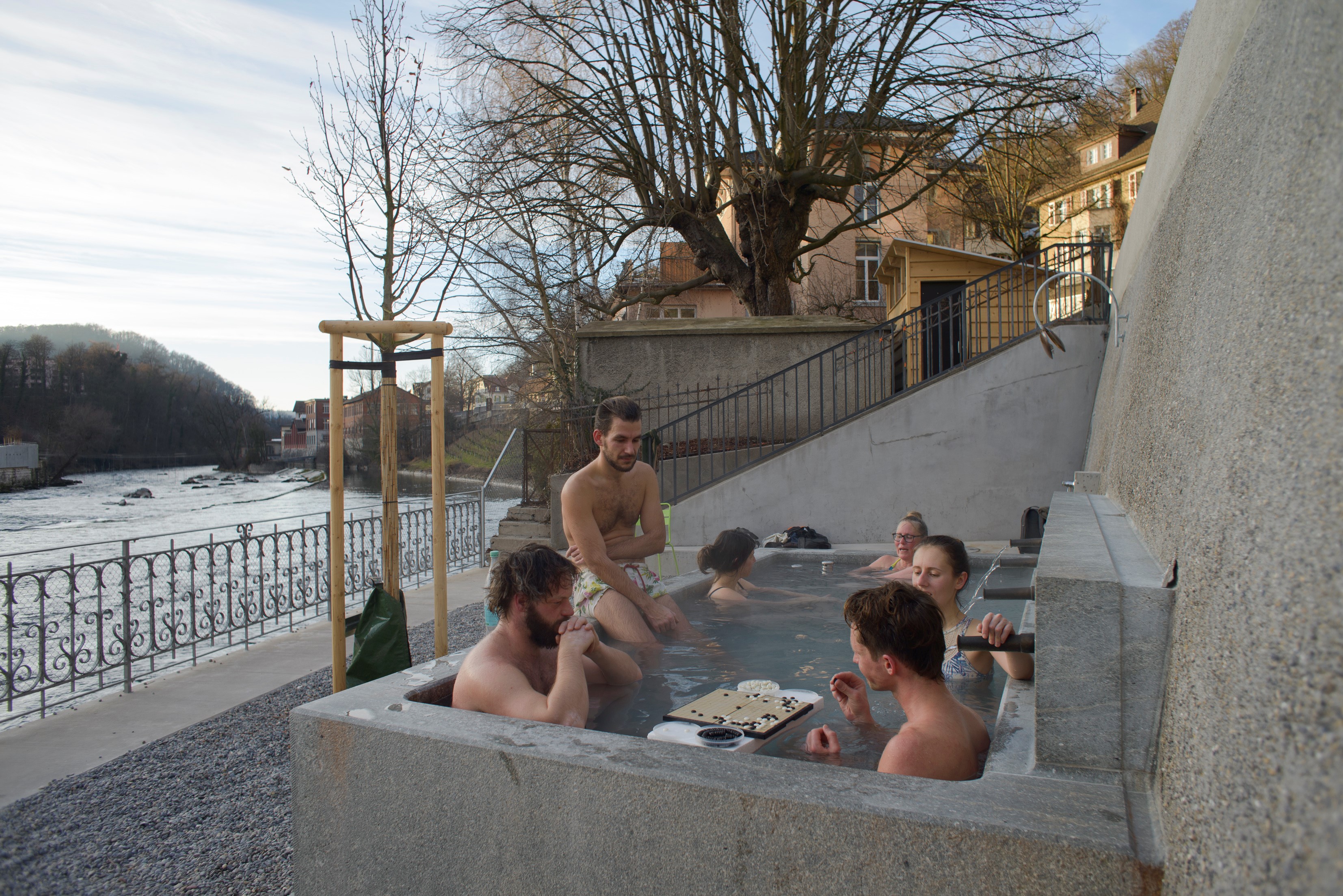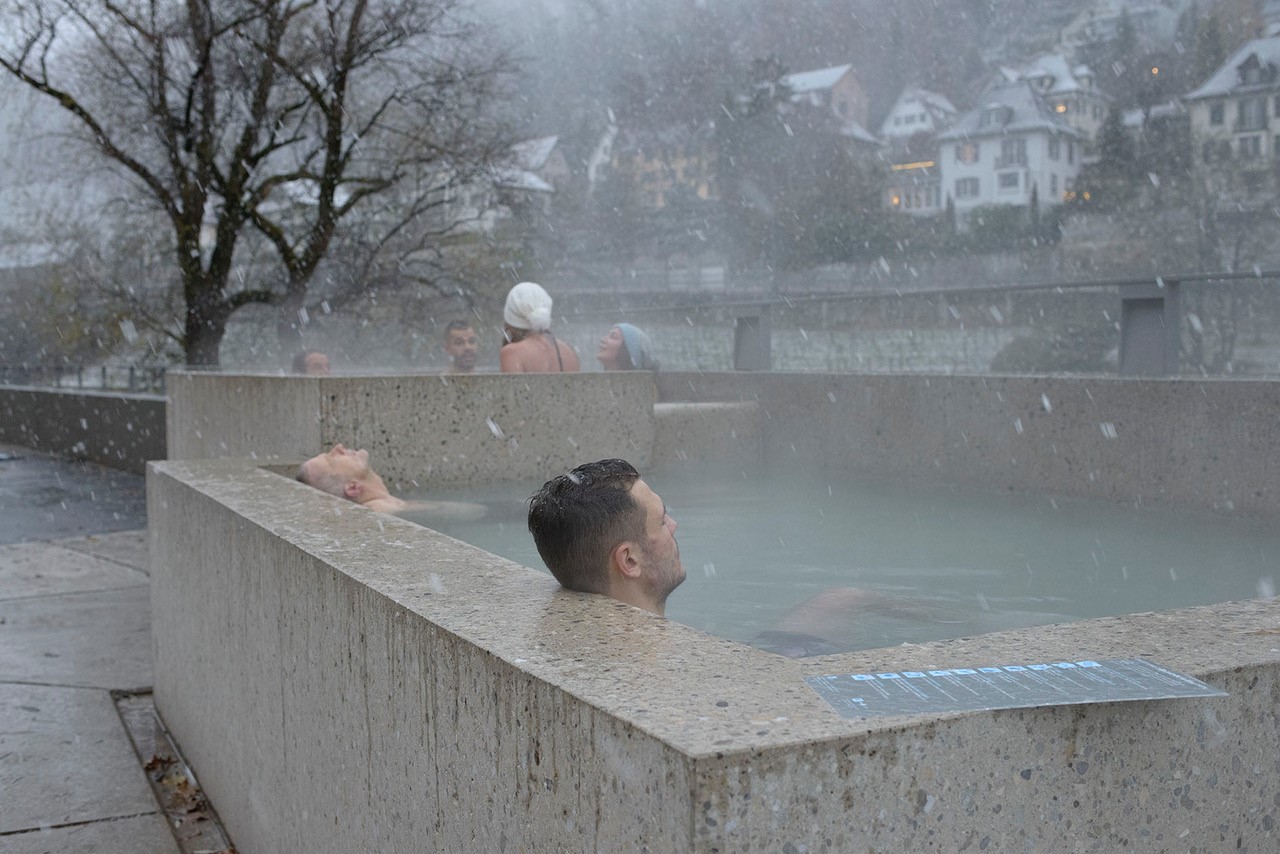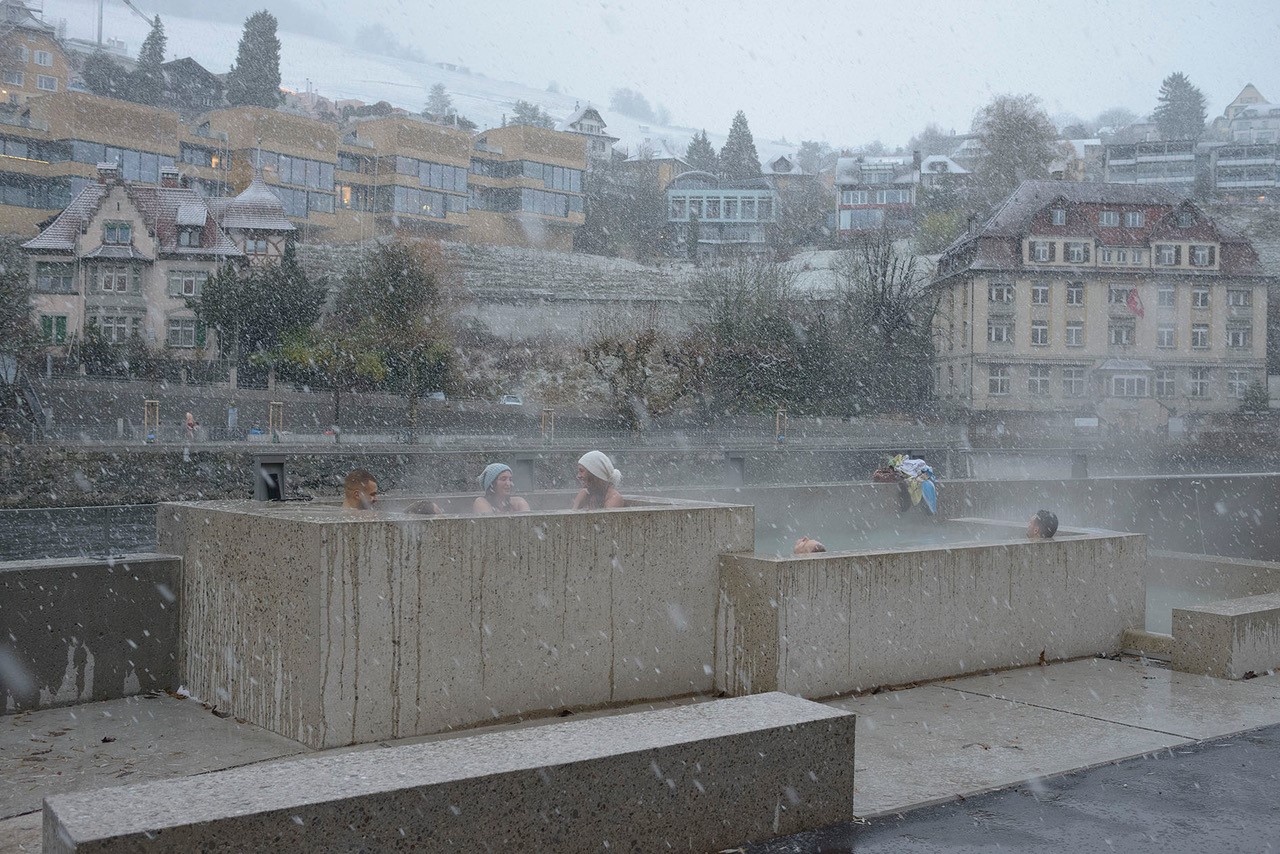Previous state
The Roman-era community baths are the original precursors to the thermal fountains in Baden and Ennetbaden. In Baden, the St Verena pools were described as public baths by Poggio Bracciolini in 1416, and they remained in use until the 19th century. There were two other baths in the main square at Ennetbaden, where passing customers and the poorest and most needy bathers, men and women alike, would all bathe together in the open air. When the baths closed in the 19th century, it meant not only that the bathers’ semi-nude bodies disappeared from the urban landscape: these free bathing facilities disappeared too. It was only in 1964, when architect Otto Glaus’s modern pool was opened, that it became possible to soak yourself in public thermal baths again — but you had to pay to use them. In fact, the last 150 years, with no access to free public baths, are an anomaly in these municipalities’ 2000 years of history.
Following the closure of Otto Glaus’s thermal pool in 2012, various cultural stakeholders in Baden came together to found the Association Bagni Popolari. They wanted to make the hot spring water accessible to the public again, via open bathing facilities.
Aim of the intervention
Public bathing, in the water from the two hot springs, is now possible once again. Opening up access to this water is a response to the need to give nature’s gift back to the people, so everybody can freely enjoy it. This bathing complex has thus been revitalised in a unique way, and it takes up the baton of two millennia of history.
Description
The intervention was carried out by creating two new areas for thermal bathing, open and free, in Baden and Ennetbaden. They are located opposite each other, on the two banks of the river Limmat. Their hot water comes from the Limmat and Schwanen springs, which have a constant flow that does not require any pumping. Both of these new bathing spaces are arranged into three pools: a small one, where the water is 40-42°C and 60 cm deep; a larger one, at 37-39°C and 40 cm deep; and another at 34-36°C and a depth of 20 cm. The size of the pools correlates to the amount of thermal water available, and they are nearly a quarter of the size of the ancient St Verena baths.
Assessment
The reintroduction of thermal baths in the public infrastructure of Baden and Ennetbaden revives an ancient tradition of community bathing, whereby the use of the public space is linked to collective wellbeing. This intervention shows how water is a key element for restoring health and bringing people together, in a city where access to this natural resource had previously been cut off.
[Last update: 15/11/2022]


